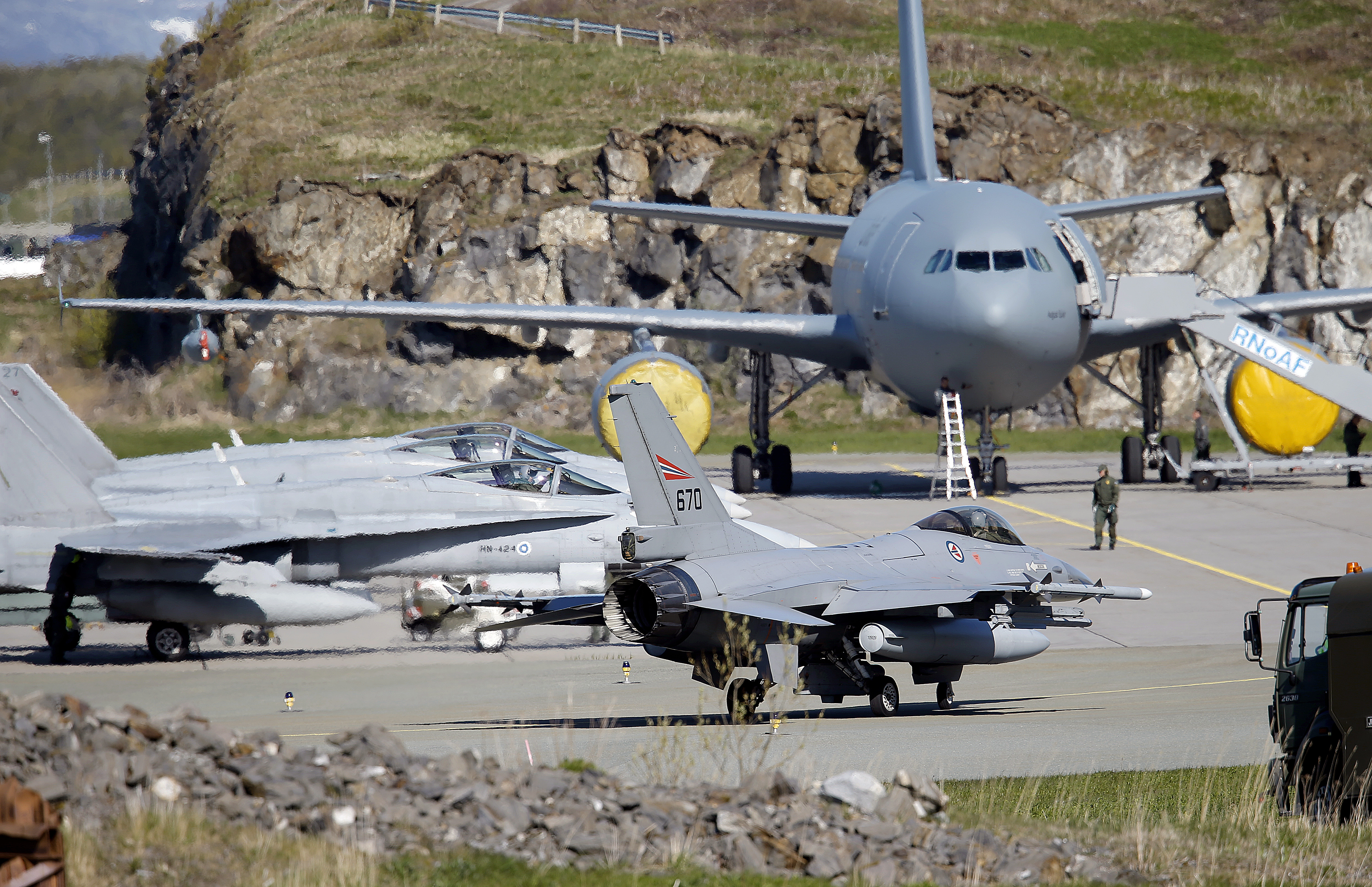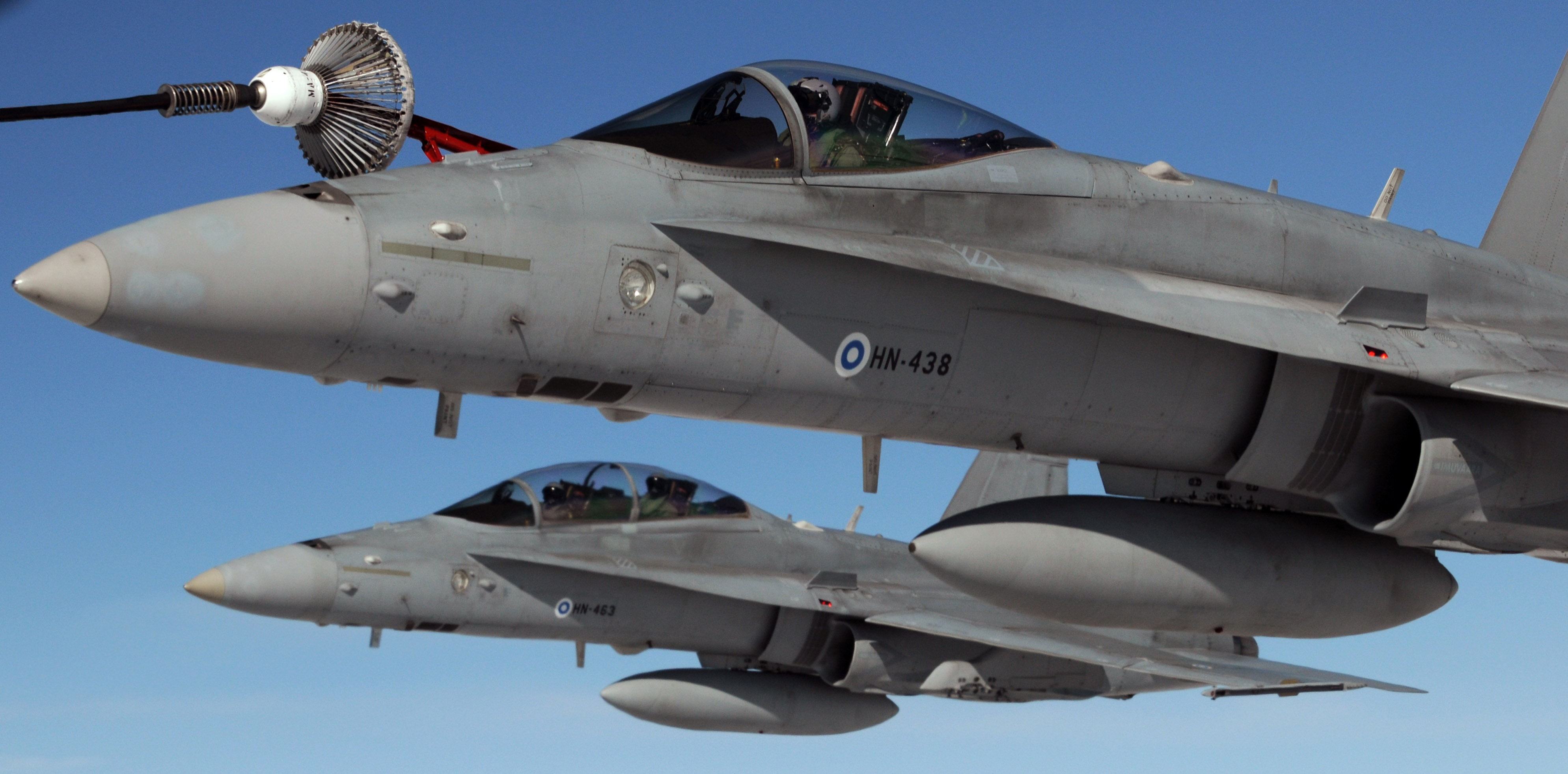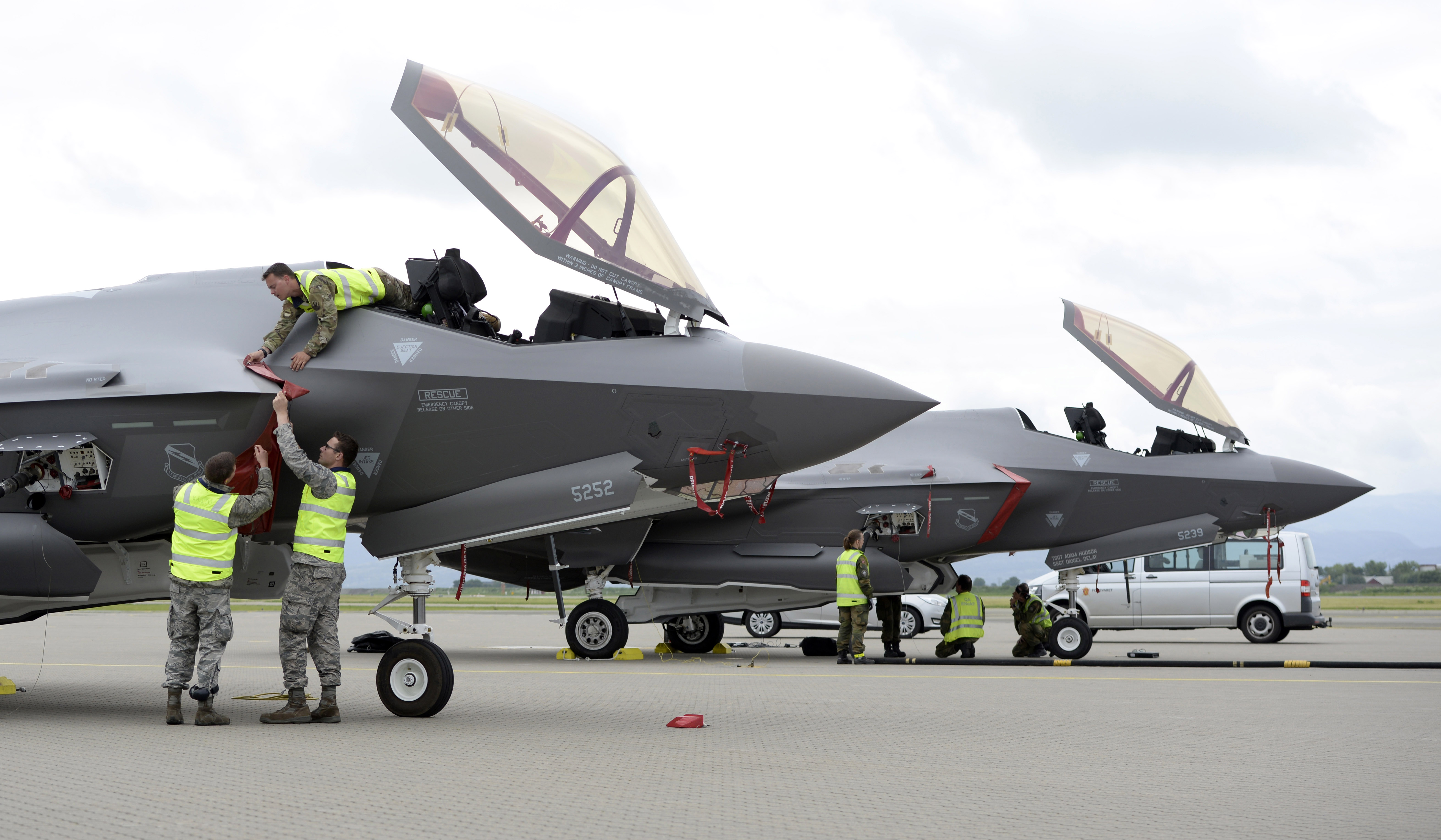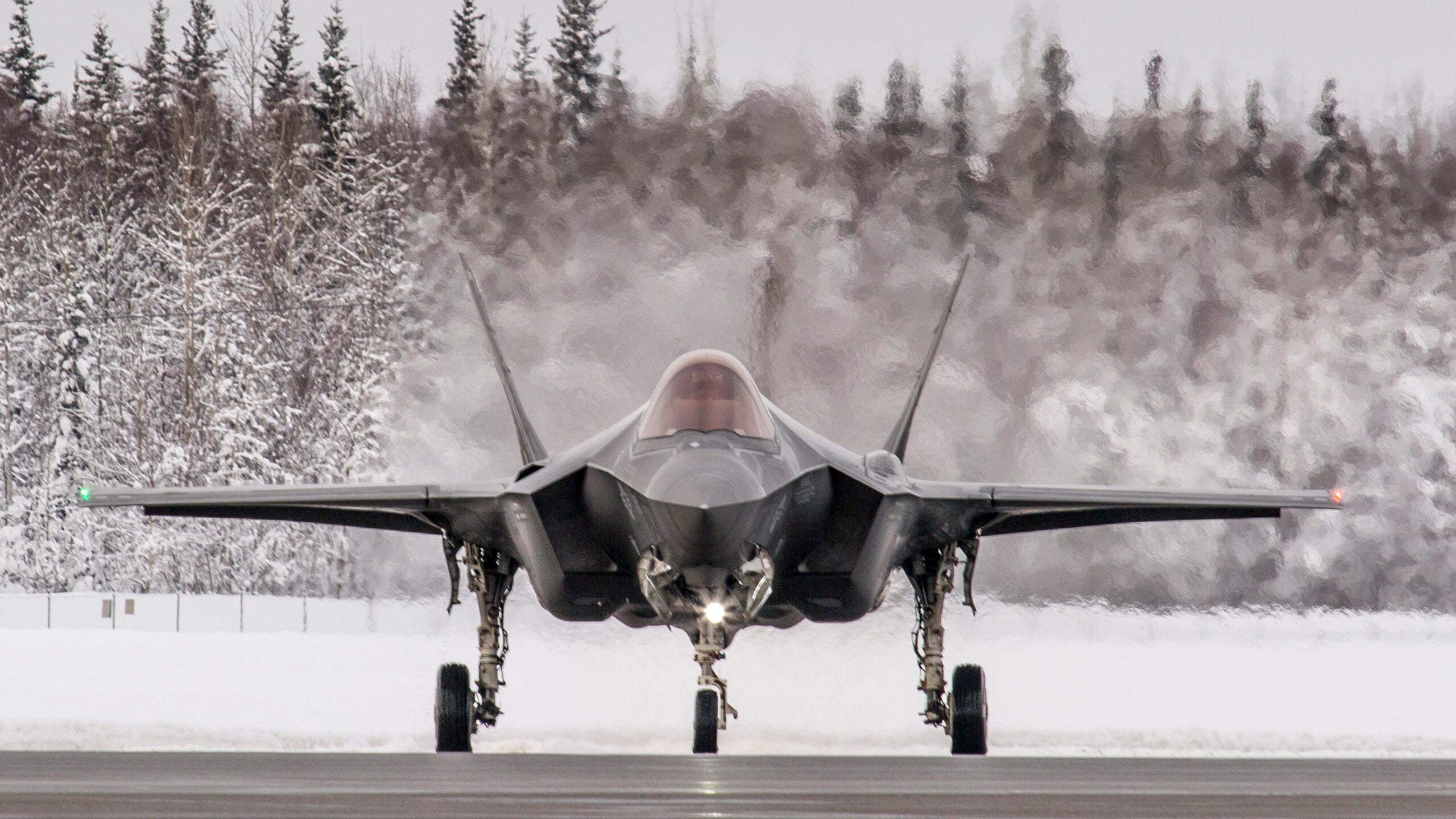It’s now official: Finland has chosen the F-35A Block 4 multirole fighter to replace its current fleet of 62 upgraded F/A-18C/D “legacy” Hornets. As part of the HX competition, the Nordic country has confirmed that it plans to buy 64 examples of the Joint Strike Fighter, plus armament, training, maintenance, and other services, with deliveries of the jets scheduled to begin in 2025. You can read our previous reporting on the F-35 and HX here.
Finnish Minister of Defense Antti Kaikkonen announced the decision in an event today that was broadcast live on YouTube. This now clears the path for the Finnish Defense Forces to enter a procurement agreement with the U.S. government. The selection of the F-35 had been widely anticipated, following a report in the Finnish press last week, but until now, the Ministry of Defense had declined to comment.

The HX tender was decided based on certain core decision areas: military capability, security of supply, industrial cooperation, and procurement and life-cycle costs. Only after a candidate met the requirements for the security of supply, industrial cooperation, and cost elements of the tender did it progress to a military performance comparison in which it went head-to-head against other successful candidates.
Compared to the rival Boeing F/A-18E/F Super Hornet, Dassault Aviation Rafale, Eurofighter Typhoon, and the Saab Gripen E, the F-35 was judged the best in terms of combat and reconnaissance capabilities — the type is uniquely capable of collecting and geolocating various forms of electronic intelligence, which you can read all about here, as well as radar and limited optical/infrared intelligence — and survivability. Not only did the Finnish government determine the F-35 is the most capable of these fighters today, but it also scored higher in terms of development potential, up until at least 2060.
Even taking into account the challenging operating environment and requirements in Finland, including dispersed operations from highway strips, the F-35 was considered the best option. This is a puzzling claim that we are eager to hear more about in regards to how it was figured. The Saab Gripen, in particular, was designed specifically for these types of operations, for instance.
Particular aspects of the F-35 that the Air Force singled out for praise were its situational awareness and ability to share targeting data with other platforms, as well as its stealth characteristics and its sensors, all of which are internal, rather than podded. The endurance of the F-35 was also praised in the Finnish competition, with the jet having the largest internal fuel capacity of the entrants and not needing external fuel tanks.
What is perhaps most surprising about the news is not that Helsinki opted for the F-35 — the advantages of which for Finland, in particular, we have discussed in detail — but the fact that the Joint Strike Fighter was considered the most cost-effective option given the framework Finland was judging from.
F-35A and F/A-18C jet fighters operate from Tampere-Pirkkala Air Base in Finland during the flight-test phase of the HX competition:

The tender confirmed that the F-35 operating and maintenance costs, as well as the expenses associated with lifecycle development, all fit within the planned budget.
“The F-35 solution, adapted to the given financial framework, was the most cost-effective,” the Finnish Air Force declared in a statement. “The F-35 was the cheapest in terms of purchase price… The operating and maintenance costs of the system are below the set annual cost limit of 254 million Euros [around $286 million at the current rate of exchange]. The operation and lifecycle development of the F-35 is possible with the resources of the Defense Forces. None of the bids were significantly cheaper in terms of operating and maintenance costs.”
Already, some are questioning exactly how Finland determined the set annual cost limit, and why it is apparently so low:
As well as capabilities and costs, the evaluation determined that the F-35 met the requirements for the security of supply. This is especially important for Finland, as a non-NATO nation, to ensure the continuity of operations in times of crisis, for example. In addition, the F-35 offer includes “significant industrial co-operation, which is especially related to the ability to operate independently in exceptional circumstances.”
Lockheed Martin and the U.S. government seem to have specifically tailored the F-35 offering to meet Finnish security of supply requirements. Maintenance of the jets, for example, “is based on a solution modified from [the Joint Strike Fighter] global maintenance system,” while certain critical maintenance capabilities become the responsibility of the Finnish Defense Forces and local industry. “The solution includes service capabilities to be built in Finland, exclusive spare parts and replacement equipment under Finnish national control and participation in a multinational service network.”
By the sound of it, Finland’s domestic support capacity for the F-35 will be among the most substantial anywhere outside the United States, perhaps only behind that of Israel, which is very well set up to operate the jet independently.
The F-35 met industrial cooperation requirements, which again called for direct industrial cooperation to help make the country (more) independent when it comes to maintaining the jets. The most important elements of the industrial cooperation agreement will be “large-scale production of F-35 front [fuselage] frames in Finland for other users as well, the production of structural components, and the ability to test and maintain equipment.”
“The F-35 will provide Finnish industries unique digital capabilities that leverage fifth-generation engineering and manufacturing,” Bridget Lauderdale, Lockheed Martin’s vice president and general manager of the F-35 program, said in a statement. “The production work will continue for more than 20 years, and the F-35 sustainment work will continue into the 2070s.”
A final engine assembly project for Finnish aircraft is also being offered in Finland, as part of an industrial cooperation agreement to be signed between the Finnish Ministry of Defense, Lockheed Martin, and engine manufacturer Pratt & Whitney.
The Air Force also pointed to the benefits of commonality that will come from F-35 fleets in Denmark and neighboring Norway, as well as the wider Joint Strike Fighter operating community. The Air Force noted that “it has been possible to agree on several special security of supply requirements that are crucial from Finland’s point of view.”

Under current plans, the Finnish Air Force will begin to dispose of its current Hornet fleet in 2025, at the same time that it receives its first F-35s, as part of the training of Finnish personnel in the United States. The goals are for the first F-35 to arrive in Finland in 2026 and for the type to have fully replaced the Hornet by 2030.

As well as the planned 64 F-35As, in the latest Block 4 configuration, Finland will pick from an assortment of weaponry, based on what is considered best suited to the operating environment. The F-35 offers included the AIM-120 Advanced Medium-Range Air-to-Air Missile (AMRAAM), AIM-9X Sidewinder, Small Diameter Bomb I and II (SDB I and II, the latter also known as Stormbreaker), Joint Direct Attack Munition (JDAM) family, Joint Strike Missile (JSM), and the AGM-158B Joint Air-to-Surface Standoff Missile-Extended Range cruise missile, or JASSM-ER.
So what will it all cost?
Finland has earmarked total funds of 10 billion Euros or around $11.3 billion for the HX project. So far, the Finnish parliament has approved an order for 9.4 billion Euros ($10.6 billion) for the project and a five-year transfer appropriation of 579 million Euros ($653 million).
So far, the acquisition is worth around 8.378 billion Euros ($9.4 billion), of which the jets themselves account for fighters account for 4.703 billion Euros ($5.3 billion) — providing an equivalent cost-per-jet of around $82 million. On top of this, 754.6 million Euros ($852 million) has been allocated for AMRAAM and Sidewinder missiles. The remaining 2.92 billion Euros ($3.3 billion) covers maintenance equipment, spare parts, training equipment, and other systems and services between 2025 and 2030.

The cost of infrastructure to operate the jets in Finland, including runways, hangarage, management systems, and staff, is put at 777 million Euros ($878 million), while 823.8 million Euros ($930 million) has been set aside for subsequent contracts and contract amendments. That is expected to include the remaining weapons and future contract changes.
Whether all those figures will stand the test of time remains to be seen, of course, but the fact they have been published by the Finnish Ministry of Defense speaks to the openness of the HX competition. They will no doubt be of great encouragement to Lockheed Martin and the F-35 Joint Program Office, especially as they show — on paper, at least — that, based on the Finnish metrics, the jet comes out more cost-effective than rival fourth-generation fighters.
The result, and the numbers, will be especially galling to Saab, perhaps, which has long campaigned its Gripen E — pitched to Finland in a package with the GlobalEye radar plane — on the basis of its affordability. With only the F-35 and the Gripen E now left in the running for the Canadian fighter competition, the Swedish manufacturer will have a lot of work to do to turn the tables on its American rival.
Contact the author: thomas@thedrive.com
